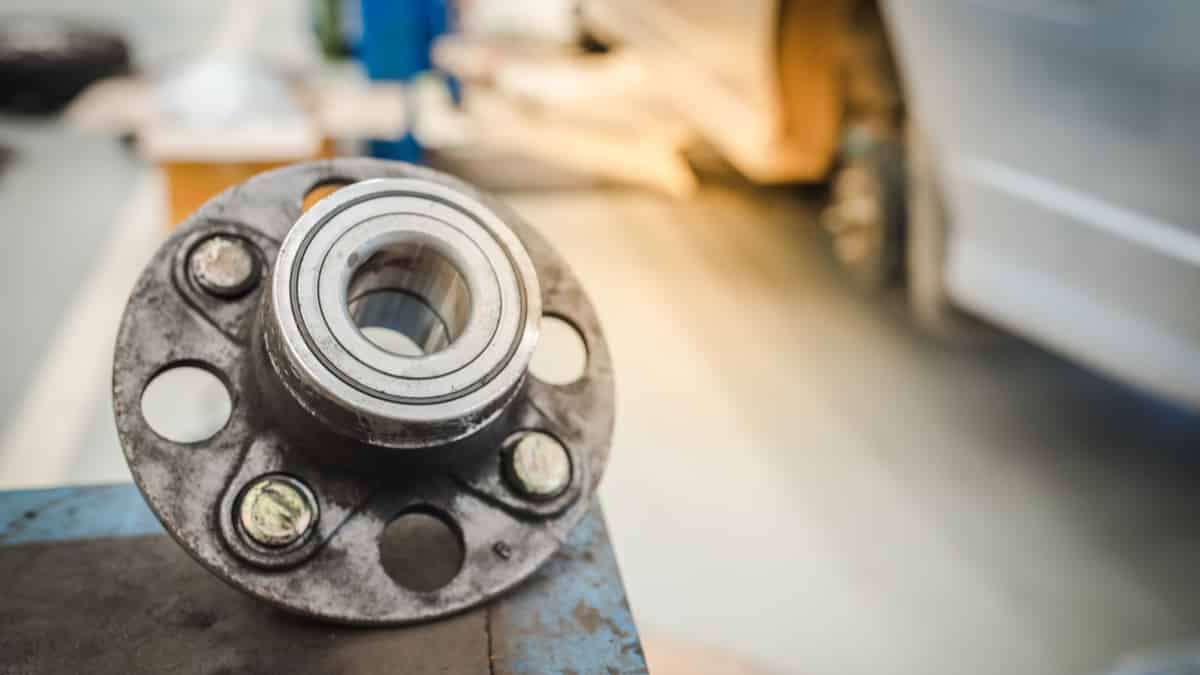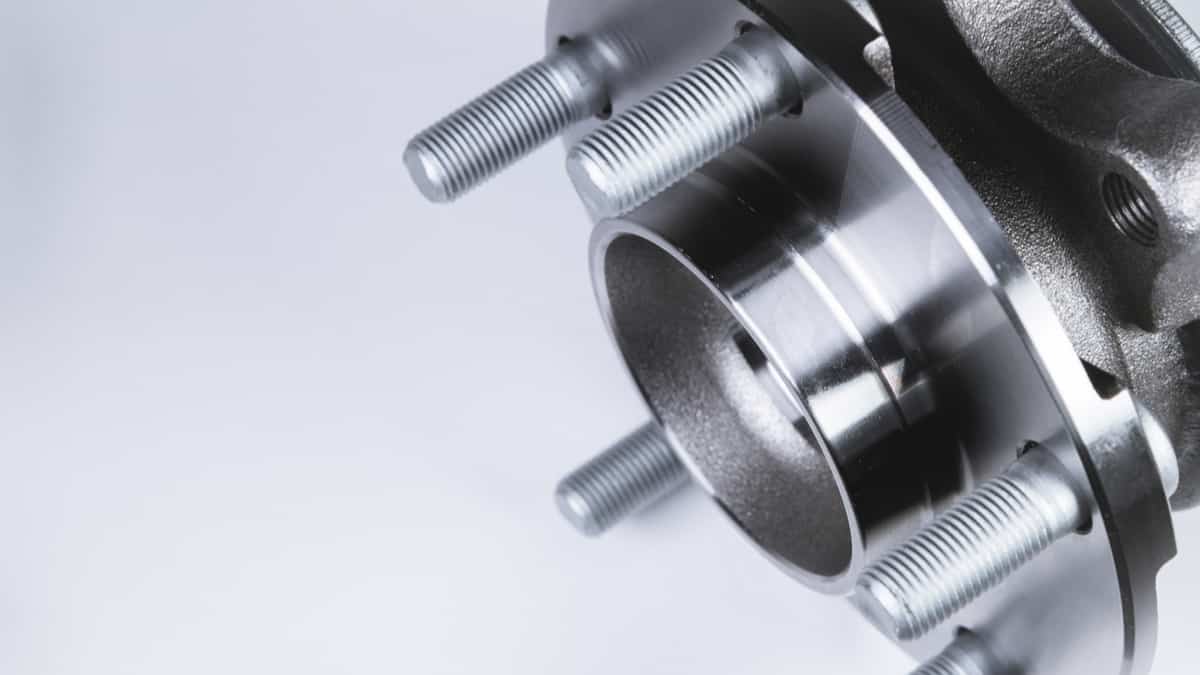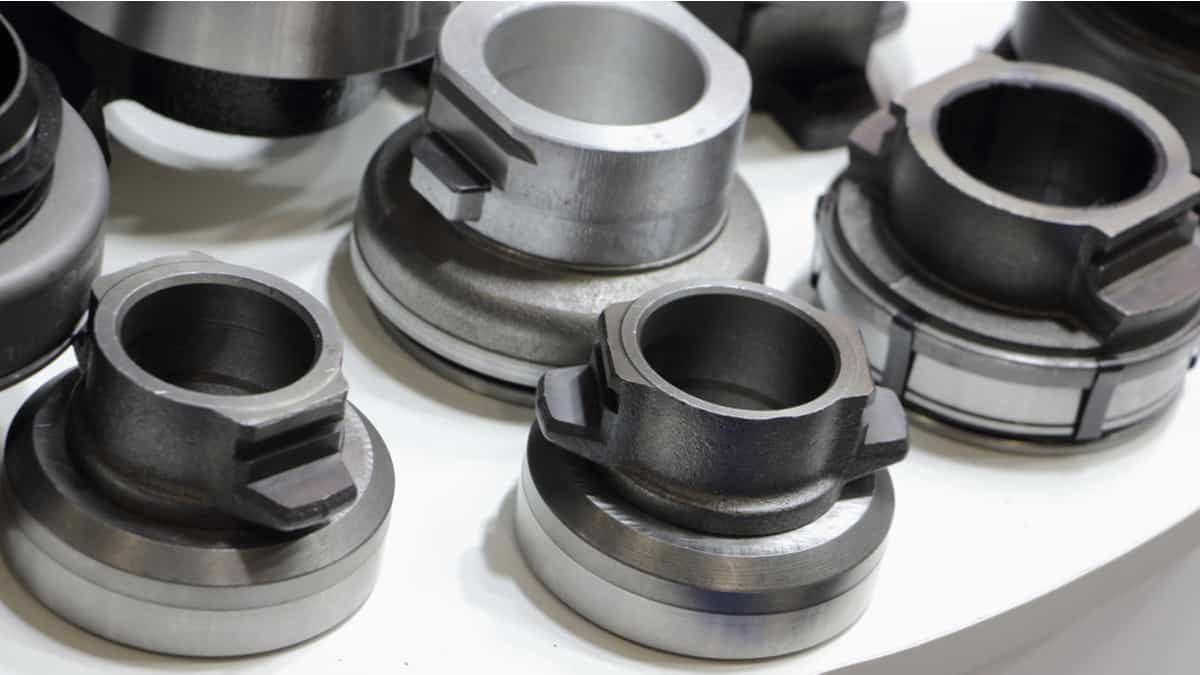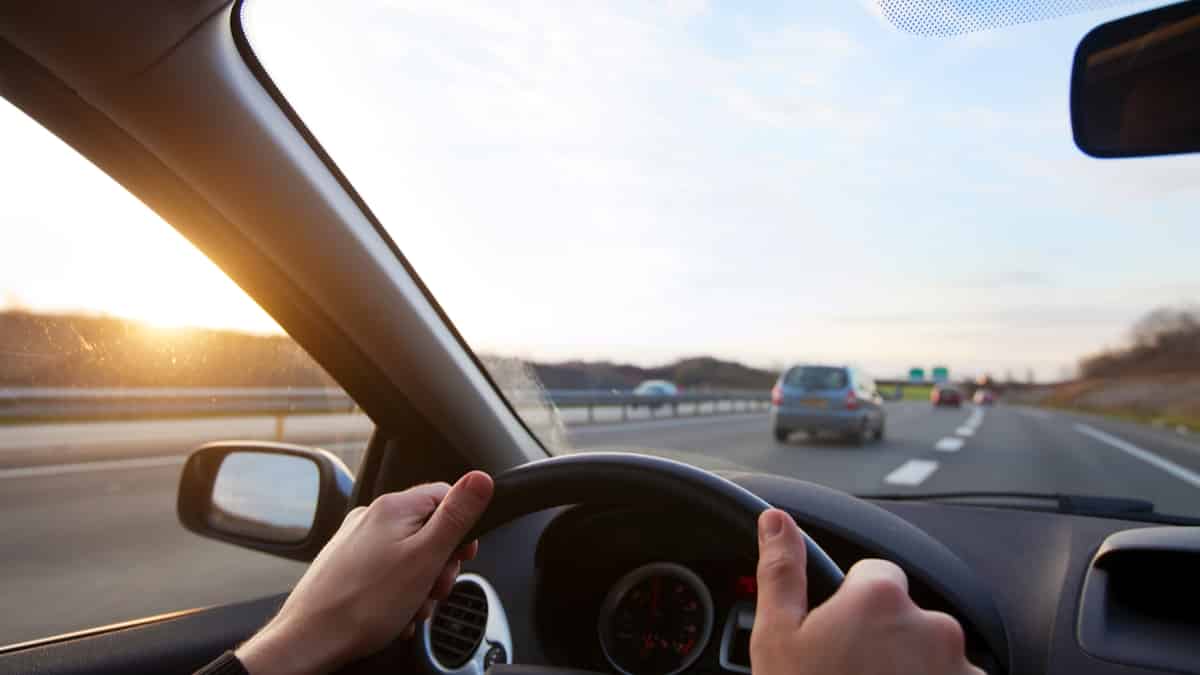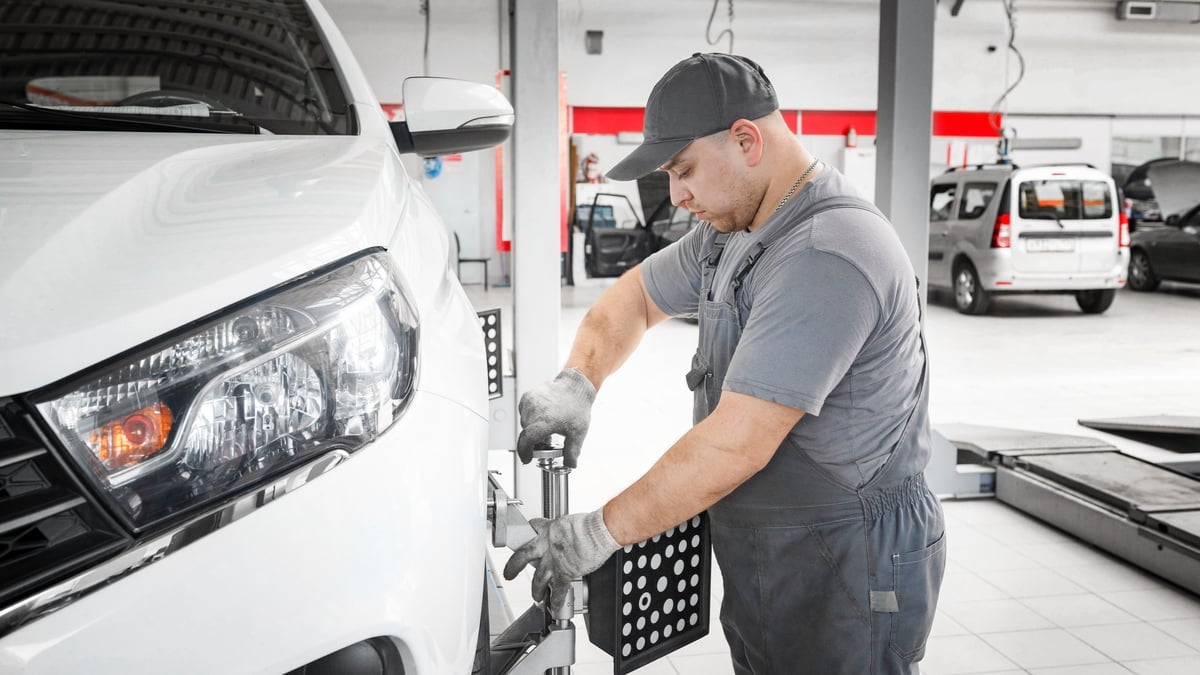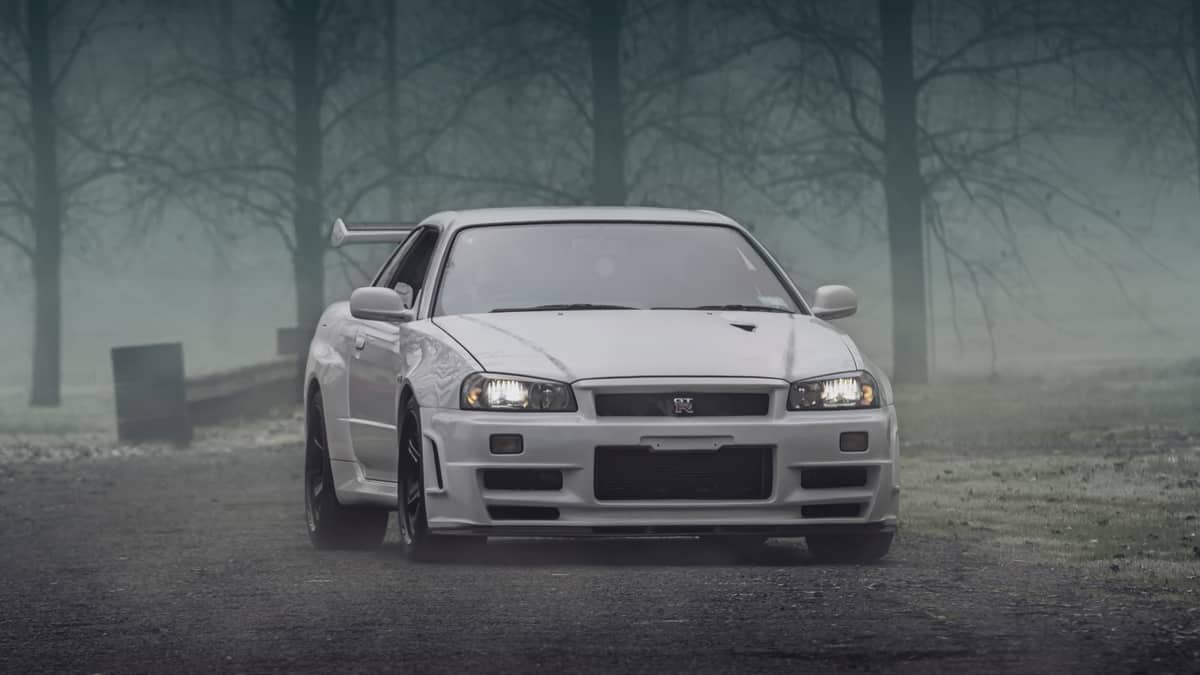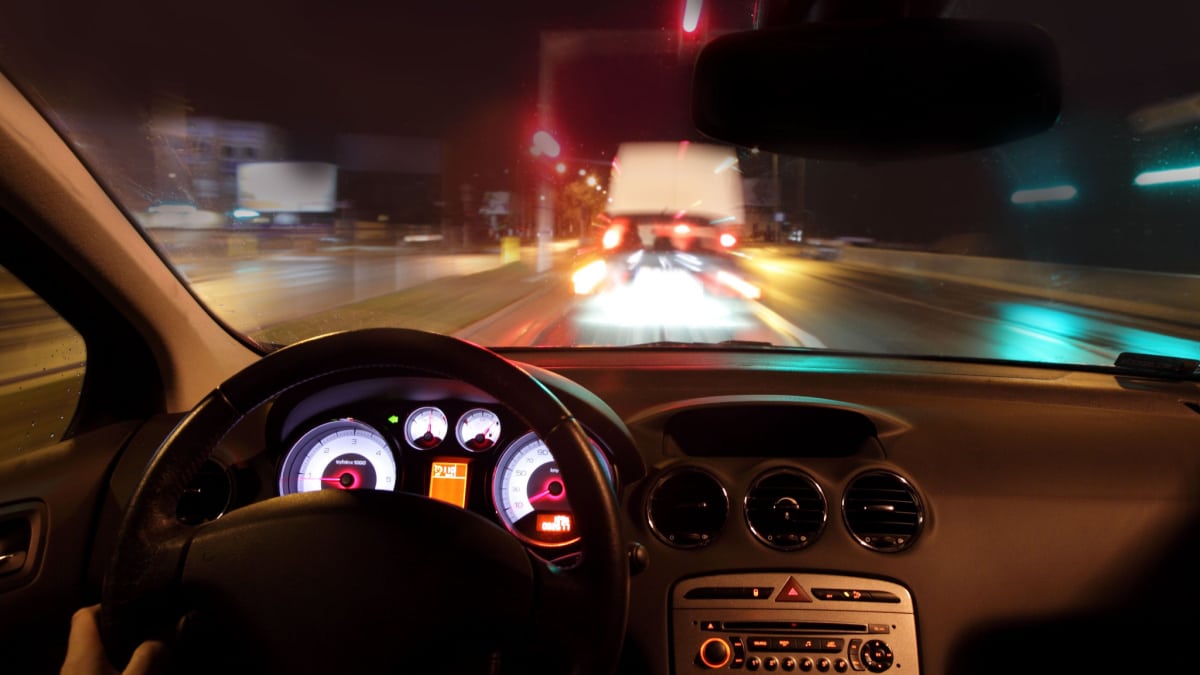Before you head to the repair shop, it’s helpful to know what you are looking at spending for your vehicle. This is especially true before you get wheel bearings changed. How much does a wheel bearing replacement cost, and what can you expect?
In this guide, I look at all of the factors that adjust the front and rear wheel bearing replacement cost. I also discuss how often the wheel bearings need to be replaced, and talk about some symptoms you might notice when the bearings fail. At the end of the article, I touch on whether you should drive with bad wheel bearings.
How Much Does A Wheel Bearing Replacement Cost?
On average, a wheel bearing replacement cost is between $250 and $1,100. Typically, you will only spend about $100 to $300 on the parts, with the majority of the cost spent on labor. It can cost anywhere from $150 to $800 to have a professional install the wheel bearings.
Some wheel bearings require special tools for replacement, which may require you to have a professional do the job for you. This can increase the wheel bearing replacement cost. The cost is also going to be different depending on if you are replacing a front or rear wheel bearing.
In some car models, you may need to replace the entire wheel hub with bearings and the ABS sensor included. This will increase the cost of parts, but reduce labor costs slightly.
Estimated Wheel Bearing Replacement Cost by Car Model
Here are some examples of the average wheel bearing replacement cost by some popular car models. The cost can also differ depending on your engine type and year model.
| Car Model | Rear Cost | Front Cost |
|---|---|---|
| Ford F-150 | $250 | $350 |
| Honda CR-V | $250 | $400 |
| Chevrolet Silverado | $300 | $500 |
| Ram 1500/2500/3500 | $350 | $450 |
| Toyota RAV4 | $300 | $400 |
| Toyota Camry | $250 | $350 |
Factors Affecting Wheel Bearing Replacement Cost
There are many factors that can affect the wheel bearing replacement cost. Here are some of the most important factors you should look at to determine the replacement cost.
1. Vehicle Make/Model
As with all car parts, it’s going to make a big difference in what type of vehicle you drive. Some vehicles are going to need low-cost wheel bearings, while others can be much more expensive. As I discussed earlier, some car models will have the ABS sensor and the entire wheel hub included in the wheel bearing, which will increase the cost of the wheel bearing itself.
It will also affect the price based on how many wheel bearings need to be replaced. It’s not necessary to replace wheel bearings that aren’t worn, no matter what a mechanic tries to tell you.
2. OEM vs. Aftermarket
If you are looking for a factory-like repair, you want to choose OEM wheel bearings. These are created by the auto manufacturer to replicate the performance you expected when the car came out of the factory. OEM parts are naturally going to cost more and you may have to visit the dealership to get them.
On the other hand, there are plenty of aftermarket companies producing wheel bearings at a lower cost. Just make sure you look at the warranty length and customer review before opting for a different brand.
Read more: OEM vs. Aftermarket Parts: Differences (& Which is Better?)
3. Bearing Type
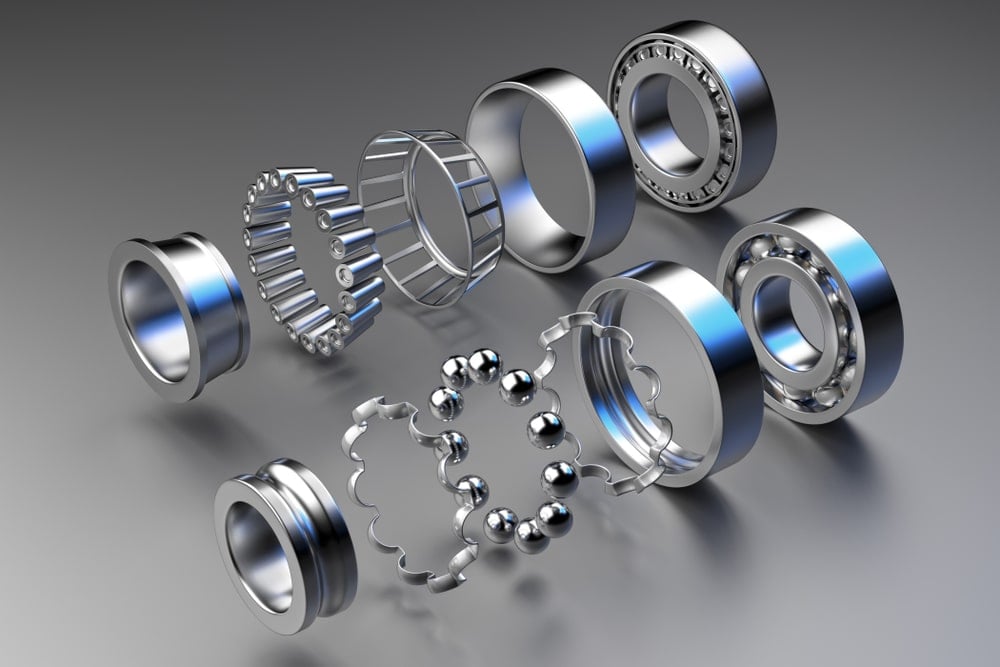
The wheel bearing replacement cost has a lot to do with what type of bearings your car uses. It’s possible that you need ball bearings, which are made with hardened steel that reduces friction. Ball bearings are more commonly used in modern car models. However, if you have an old car, there is a chance that your car has roller bearings, which are usually cheaper.
Roller bearings rely on rollers working between the inner and outer portions to reduce friction. With the larger contact area, heavier loads are better supported. The needle bearing is another type of roller bearing, except smaller needles are used, and there’s no adjustability.
4. Serviceable vs. Unserviceable
Serviceable hub assemblies are the simplest to work on. The wheel bearing gets separated from the wheel hub, ensuring that the suspension doesn’t need to be dismantled. Non-serviceable hub assemblies make it impossible to replace just the bearing. In this case, you would need a new hub.
If it contains a press-in bearing, you have to take off the wheel. This is the most labor-intensive type to fix, so you can expect a higher wheel bearing replacement cost.
5. DIY vs. Professional
Often, with some mechanical expertise and the right tools, you can replace wheel bearings in a home garage. With this method, you don’t have to pay any labor charges. However, you may find yourself needing more tools than you have on hand, which could add to the wheel bearing replacement cost.
If you aren’t prepared to replace the wheel bearings at home, you need to take the vehicle to an auto repair shop. The cost of labor depends on what type of mechanic you use, the type of vehicle you drive, and your location. It’s best to shop around for a decent labor rate before making up your mind, unless you already have an established relationship with a reliable mechanic.
How Often Should Wheel Bearings Be Replaced?
Generally, you can expect to replace the wheel bearings at around 80,000 to 200,000 miles, but you aren’t going to find a schedule for wheel bearing replacement in your owner’s manual. This part isn’t included with the regular maintenance.
In general, wheel bearings are meant to last the lifetime of your car. Even still, many people find themselves needing to replace them at some point. Your driving conditions, regular habits, and environment can have a lot of effect on how long the wheel bearings last.
If you drive through deep water, mud or along roads that are bumpy, you might go through wheel bearings more frequently. It’s also prone to occur when you have overweight loads, tires out of balance or if the installation of the previous wheel bearings wasn’t performed correctly. If you find yourself regularly needing new wheel bearings, it might be time to evaluate what can be changed to prolong their life.
How to tell if the wheel bearing is failing?
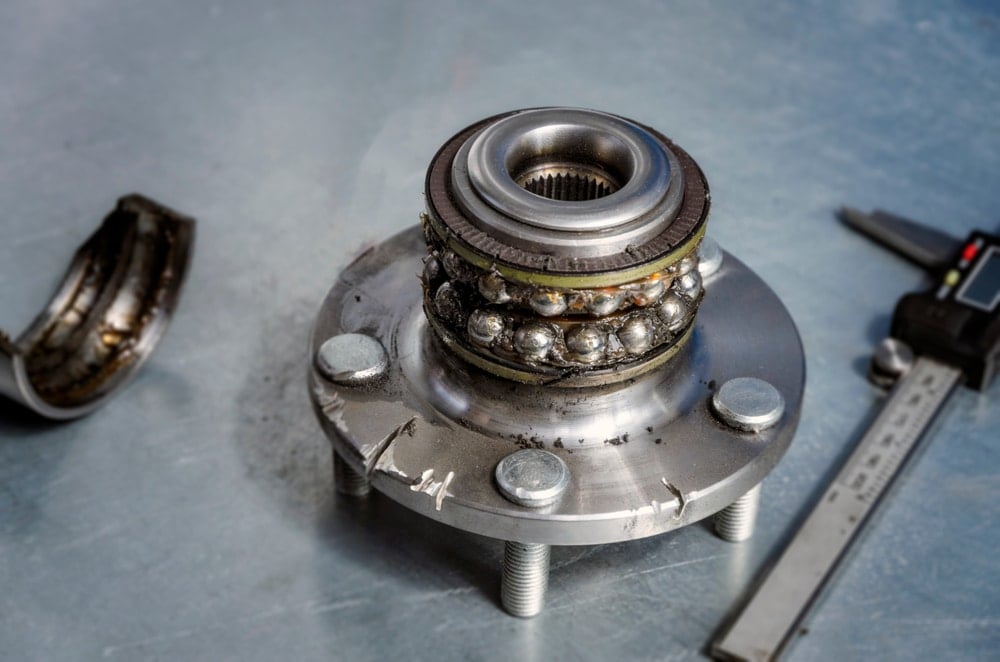
1. Strange Noises
Most people notice there’s an issue with the wheel bearing when noises appear. At first, you might hear a growling, rumbling or humming, especially when accelerating during a turn.
There could also be a louder constant grinding or whining noise as the vehicle is moving. If you are driving across a road surface that’s uneven, the noise could sound clunky instead. Either way, you should have all weird sounds checked out just to ensure it’s nothing dangerous.
READ MORE: Wheel Bearing Noise – Causes & What Does It Sound Like?
2. Uneven Tire Wear
When wheel bearings start to wear, you will notice some changes to the tire tread. The tire associated with that wheel will wear differently than the other tires.
However, uneven tire wear isn’t automatically associated with bad bearings. Your problem could also be a bad wheel alignment or unbalanced tires. For this reason, you need to make sure you are keeping up with regular tire maintenance.
3. Steering Changes
Wheel bearings have an immense impact on how the vehicle feels while driving. If you are noticing excessive play or a loose feeling in the steering wheel, it could be due to a bad wheel bearing.
Vibration can also be an issue when the bearings fail. You can feel the vibration through the steering wheel, and at first, this will mainly happen when turning or increasing speed. However, as the problem becomes more pronounced, there could be regular vibration.
4. Vehicle Pulls
Along with the other steering issues, you might notice the car pulling to one side. As the wheel bearings corrode or become damaged, you are going to notice more pulling.
Road surfaces can be the main cause of vibration and pulling, so you can’t judge your problems by this symptom alone if it only happens sporadically. Additionally, a car that only pulls when braking could be a sign of a bad caliper or rotor instead. Either way, it’s best to have the problem looked at, so you can ensure a safe drive.
5. ABS Malfunctions
Bad wheel bearings can lead to trouble with the ABS. Your anti-lock braking system relies on a well-functioning system to perform as intended.
However, the ABS can be tricky to troubleshoot. Don’t assume that you have a wheel bearing issue, as there could easily be a malfunctioning sensor or another defect. It’s important to get the system diagnosed to determine what’s causing problems.
LEARN MORE: 5 Symptoms of a Bad Wheel Bearing (Function & Location)
Can You Drive with a Bad Wheel Bearing?
No. You should not drive with bad wheel bearings. Driving with a bad wheel bearing is dangerous and can lead to accidents where the wheel locks due to the bad wheel bearing. It’s not very common for it to lock up, but it could potentially happen if you ignore it.
I understand that if you are short on money, you may want to drive as long as possible, but this might not be wise. As the wear becomes worse, you could be looking at replacing other parts, as suspension damage can occur over the long term.
How Hard Is It To Change A Wheel Bearing?
Replacing a wheel bearing on modern cars can be quite tricky and is often not an easy job, but it depends on the car model. To replace most car wheel bearings, you will need a hydraulic press to remove and install the wheel bearing. But if the wheel bearing is bolted to the wheel hub, it is easier to replace it yourself.
Keep in mind that wheel bearings are located in an area exposed to water and dirt, and therefore it can be difficult to get the bolts loose if you don’t have the right skills.
Do you have to change both wheel bearings at the same time?
No. There is no reason to replace both wheel bearings if only one is bad. It could just be a defective bearing to begin with, and the other side could last thousands of miles longer. If you want to be sure and not have to worry about the wheel bearing on the other side, you could go ahead and replace it, but it is not necessary.
A Mechanic’s Tips About Wheel Bearing Replacement
- Always make sure you have the right tool for the job before starting the procedure. Some wheel bearing replacements require a press tool. You also need the right adapters to remove and install the new bearing.
- Wheel bearings can be difficult to diagnose, so make sure you replace the correct wheel bearing. Lift the car and spin the steering wheel to listen for strange noises near it.
- Don’t forget to lubricate all parts before reassembling everything. You’ll thank yourself the next time you replace something in the suspension.
Wheel bearings play an important role in your vehicle, and if they are damaged, it can lead to serious consequences. That’s why it’s important to replace a bad wheel bearing and know how much a wheel bearing replacement costs so you can be prepared if something goes wrong.
I hope this article helped you and that you now have the knowledge to determine what the wheel bearing replacement cost is, and whether or not you can replace the wheel bearing yourself.
Learn more:
- How Often Should You Rotate Your Tires?
- 5 Symptoms of a Bad Tie Rod End (& Replacement Cost)
- Rear Differential Noises: Diagnosis, Prevention (& Repair Costs)
Categories: Estimator, Suspension
